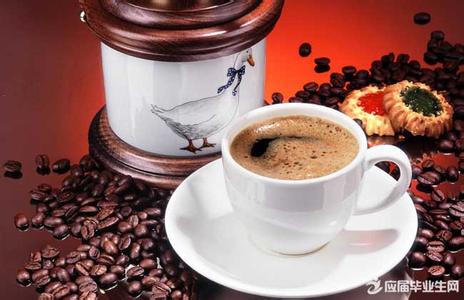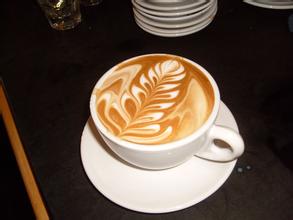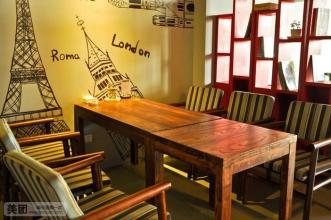Introduction to the characteristics of Panamanian boutique coffee bean manor with elegant and complex flavor
Panama is located on the Panamanian isthmus in Central America, bounded by Colombia to the east and the Pacific Ocean to the south.
It is bordered by Costa Rica to the west and the Caribbean to the north. The territory is S-shaped to connect North and South America, and the Panama Canal connects the Atlantic and Pacific oceans from north to south. It is known as the "bridge of the world". [5] Panama has a land area of 75517 square kilometers, a land length of 772km and a width of between 60km and 177km. The coastline is 2988 kilometers long and the land boundary is 555 kilometers long. In terms of longitude and latitude, Panama is located between 7 °and 10 °north latitude, and between 77 °and 83 °west longitude. Panama is rich in forest resources and has many tree species, including mahogany, sequoia, teak, mahogany, cedar and other valuable timber. The forest area of Dalian Province in the east is the most widely distributed, but it has not been fully developed due to lack of market and for reasons such as national defense and protection of the natural ecological environment. [5] according to FAO estimates in 2010, the forest area of Panama is 4.29 million hectares, accounting for 57% of the land area. the Panamanian national emblem was launched in 1904 by a brown eagle with its head held high.
It stands on the national emblem with a white ribbon with the Panamanian motto "for the benefit of the world". In the middle of the national emblem is the brown isthmus of Panama, the blue Pacific and Caribbean seas, and the Panama Canal that connects them; under the blue sky, a bright moon has risen, the corresponding sunset is still shining in all directions, symbolizing the arrival of Panama's independence "at sunset and moonrise"; the silver sword and rifle crossed on the upper left have experienced the ups and downs of hundreds of years of war on Panamanian land. The T-pick and shovel on the upper right represent the country's call for active construction and hard work; the sheep's horn overflowing with gold coins and the golden two-winged flywheel symbolize the progress and prosperity of the country. Four national flags are decorated around the national emblem, and the top nine golden five-pointed stars represent the Panamanian National Assembly of the nine provinces of Panama as a unicameral system, exercising legislative power. It is composed of 70 members who are directly elected for a term of five years. The current Parliament was formed on 1 July 2009, and the seats occupied by the various parties are as follows: 36 seats for the Democratic change Party (member of the ruling coalition), 17 seats for the Democratic Revolutionary Party, 12 seats for the Panamanian Party, 4 seats for the Nationalist Republican Freedom Movement (member of the ruling coalition) and 1 seat for the people's Party. Sergio Galvez, President of Congress, was elected for an one-year term on July 1, 2012.
Panama's geographical advantage is that it has many distinctive microclimate areas suitable for coffee cultivation, and Panama also has many persistent and professional coffee growers. This means there will be a lot of very good coffee in Panama, but these coffees are often associated with high prices.
The high price of coffee in Panama is mainly caused by the following factors:
Land price: for the people of North America, they very much want to buy a stable and beautiful land at a low price. Panama is such a place when coffee prices are relatively low. The Panamanian Fine Coffee Association organized a competition called "Best Panama": coffee beans from different parts of Panama were ranked and auctioned online. Esmeralda Manor has been growing a kind of coffee called "Geisha" for many years, and the auction has made their coffee known to more people. Then they won the first place in the competition for four consecutive years from 2004 to 2007, and then won the competition again in 2009 and 2013. It kept breaking records until it was priced at $21/lb in 2004 and then rose to $170/lb in 2010. In 2013, a small portion of the sun-treated coffee was sold for $350.25/lb. There is no doubt that this is the highest price ever sold for coffee on a single estate. The distinction between Panamanian growing areas depends mainly on the sales situation of coffee, but mostly on geographical distribution. In the past, coffee was widely spread, and the following areas are actually one area, but these areas are closely linked.
Boquete
This is the Panamanian region that we are most familiar with. The special mountainous terrain of this area forms a microclimate which is very suitable for growing coffee. Cool weather and frequent foggy days slow down the ripening process of coffee cherries, and some people even say that this climate can already simulate high-altitude planting.

Important Notice :
前街咖啡 FrontStreet Coffee has moved to new addredd:
FrontStreet Coffee Address: 315,Donghua East Road,GuangZhou
Tel:020 38364473
- Prev

Mellow afterscent of Guatemalan coffee flavor taste manor characteristic boutique coffee
In Guatemala, it is famous for producing high-quality beans, which is the highest elevation and dry climate in the coffee growing area of the country. Located in a rare non-volcanic area in China and the United States, the mountains are potholed and the terrain is very dangerous. Although the elevation is nearly 2000 meters, the warm, dry air from the plains of Mexico protects coffee trees in this area from frost.
- Next

Introduction to the flavor and taste of Nicaraguan boutique coffee beans the characteristics of the manor area
Columbus arrived here in 1502 and reached the east coast of Nicaragua. In 1522, Spanish colonists began to conquer the region. The cities of Granada and Leon were founded in 1524. From then on, Nicaragua became a Spanish colony and came under the jurisdiction of the Governor's Office of Guatemala. The city of Leon developed into a political and cultural center; Granada became a commercial and agricultural center. In the later period of colonial rule
Related
- Detailed explanation of Jadeite planting Land in Panamanian Jadeite Manor introduction to the grading system of Jadeite competitive bidding, Red bid, Green bid and Rose Summer
- Story of Coffee planting in Brenka region of Costa Rica Stonehenge Manor anaerobic heavy honey treatment of flavor mouth
- What's on the barrel of Blue Mountain Coffee beans?
- Can American coffee also pull flowers? How to use hot American style to pull out a good-looking pattern?
- Can you make a cold extract with coffee beans? What is the right proportion for cold-extracted coffee formula?
- Indonesian PWN Gold Mandrine Coffee Origin Features Flavor How to Chong? Mandolin coffee is American.
- A brief introduction to the flavor characteristics of Brazilian yellow bourbon coffee beans
- What is the effect of different water quality on the flavor of cold-extracted coffee? What kind of water is best for brewing coffee?
- Why do you think of Rose Summer whenever you mention Panamanian coffee?
- Introduction to the characteristics of authentic blue mountain coffee bean producing areas? What is the CIB Coffee Authority in Jamaica?

